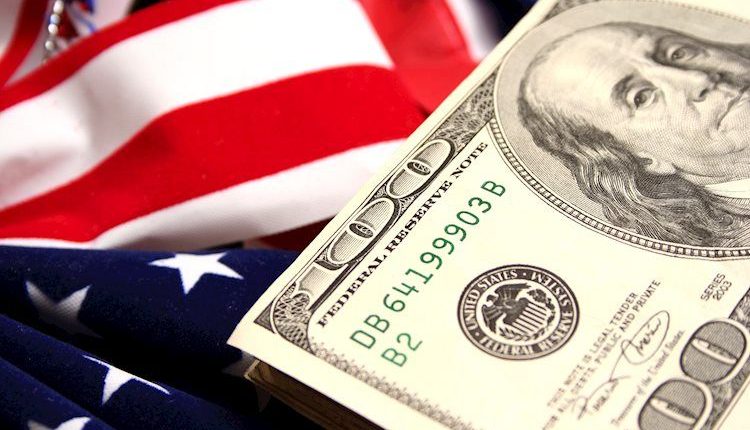- The US Dollar trades marginally in the green on Tuesday after a minor incurred loss on Monday.
- Traders will likely keep powder dry for the Fed interest rate decision on Wednesday.
- The US Dollar Index resides above 105.00, struggling to make new highs.
The US Dollar (USD) took a small step back at the start of this week with traders focusing on the main event on Wednesday with the US Federal Reserve (Fed) rate decision. Expectations are for no hike, though with the recent resurgence in headline inflation via energy prices, US Fed Chair Jerome Powell might be more hawkish than predicted.
Traders, meanwhile, have to split and divide their attention between the Fed and Capitol Hill, with a possible US government shutdown looming again. By Thursday, US House Speaker Kevin McCarthy needs to bring a new stopgap bill to the floor for a vote. If the House fails to pass the bill, the probability of a shutdown in October grows more dire.
Daily digest: US Dollar softens
- A bit more data this Tuesday arrives after the calm start on Monday with US housing data hitting the wires at 12:30 GMT. Building Permits are expected to stay steady near 1.445 million, a touch higher from the 1.443 million in July. Housing Starts are expected to head from 1.443 million to 1.445 million.
- Near 12:55 GMT, the US Redbook will be released. Previous number was 4.6%.
- The US Treasury will be auctioning 20-year Treasuries.
- Equities are in the red this Tuesday ahead of the US Fed meeting. Several trading desks are reporting some profit-taking ahead of a possible failure of the stopgap bill to avoid a US shutdown.
- The CME Group FedWatch Tool shows that markets are pricing in a 99% chance that the Federal Reserve will keep interest rates unchanged at its meeting in September. Traders though will need to watch out for any hawkish rhetoric from Powell as inflation has been ticking up recently.
- The benchmark 10-year US Treasury yield trades at 4.31% and peaked in early Monday trading before starting to sell off. A small flight to safe havens with US bonds being bought triggers a decline in yields.
US Dollar Index technical analysis: Facing selling pressure
THe US Dollar was facing some selling pressure on Monday, which actually is not a bad thing as such. After a ninth consecutive week of gains for the US Dollar Index (DXY), the Relative Strength Index (RSI) is a fair bit into overbought territory. A few days of sideways to lower would help cool down the rally a bit before entering the next leg up, where the US Fed rate decision could act as a catalyst.
The US Dollar Index (DXY) has edged up, reaching 105.41. This is just a sigh away from the 2023 high near 105.88. Should the DXY be able to close above there for the week, expect the US Dollar to go even stronger in the medium-turn.
On the downside, the 104.44 level seen on August 25 kept the Index supported on Monday, halting the DXY from selling off any further. Should the uptick that started on September 12 reverse and 104.44 gives way, a substantial downturn could take place to 103.04, where the 200-day Simple Moving Average (SMA) comes into play for support.
US Dollar FAQs
The US Dollar (USD) is the official currency of the United States of America, and the ‘de facto’ currency of a significant number of other countries where it is found in circulation alongside local notes. It is the most heavily traded currency in the world, accounting for over 88% of all global foreign exchange turnover, or an average of $6.6 trillion in transactions per day, according to data from 2022.
Following the second world war, the USD took over from the British Pound as the world’s reserve currency. For most of its history, the US Dollar was backed by Gold, until the Bretton Woods Agreement in 1971 when the Gold Standard went away.
The most important single factor impacting on the value of the US Dollar is monetary policy, which is shaped by the Federal Reserve (Fed). The Fed has two mandates: to achieve price stability (control inflation) and foster full employment. Its primary tool to achieve these two goals is by adjusting interest rates.
When prices are rising too quickly and inflation is above the Fed’s 2% target, the Fed will raise rates, which helps the USD value. When inflation falls below 2% or the Unemployment Rate is too high, the Fed may lower interest rates, which weighs on the Greenback.
In extreme situations, the Federal Reserve can also print more Dollars and enact quantitative easing (QE). QE is the process by which the Fed substantially increases the flow of credit in a stuck financial system.
It is a non-standard policy measure used when credit has dried up because banks will not lend to each other (out of the fear of counterparty default). It is a last resort when simply lowering interest rates is unlikely to achieve the necessary result. It was the Fed’s weapon of choice to combat the credit crunch that occurred during the Great Financial Crisis in 2008. It involves the Fed printing more Dollars and using them to buy US government bonds predominantly from financial institutions. QE usually leads to a weaker US Dollar.
Quantitative tightening (QT) is the reverse process whereby the Federal Reserve stops buying bonds from financial institutions and does not reinvest the principal from the bonds it holds maturing in new purchases. It is usually positive for the US Dollar.
Read the full article here

